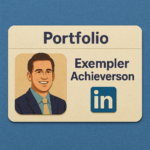“Hello! I’d like to add you to my professional network.”
This is an example of the most common LinkedIn connection request that people send to others on the platform. LinkedIn is a treasure trove of opportunities and can help users further their careers if they know how to use it right. However, in order to connect with someone, you first have to send them a connection request.
This LinkedIn connection request is the user’s first chance to make an impression on the person and let them know who they are, and why they need to connect. LinkedIn provides users 300 characters to write a request, and yet, there are very few people who actually use this length to its maximum potential.
If you are sending a connection request to someone you already know, this is your chance to say something positive to reinforce the relationship with that person. If it’s someone you don’t know all that well, it can be an opportunity to remind them of how the first connection was made.
But, in most cases, users will find themselves sending a LinkedIn connection request message to people they have never met. In this case, the message they write plays a very important role. This is the only chance marketers have to convince them to accept their request.
If users send a default one-liner like above, the chances of acceptance are significantly lower. Sending a well-worded connection request is not just going to help users expand their network, but it will also help them generate qualified leads through a segmented audience.

As Head of Customer Success, Lusine specializes in helping businesses achieve measurable growth by transforming underperforming campaigns into success stories. Lusine writes impactful articles that reflect her deep expertise in social media strategy and digital marketing, offering insights that drive engagement and deliver results. Combining data-driven analysis with a focus on client success, she makes sure every strategy aligns with business goals and exceeds expectations


The digital-first professional landscape requires a strong online presence, and it is crucial for career growth. LinkedIn stands out as the premier platform for building your professional brand.…

Nowadays, digital marketing and personal branding on social media platforms have become a vital tool for professionals and businesses. Among these, LinkedIn stands out as the preeminent platform…

When people think of LinkedIn, they often picture a place for job updates and networking. But today, LinkedIn has become much more than that. It’s now one of…